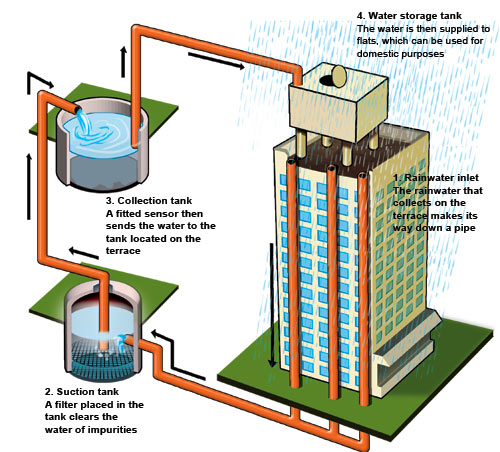Rainwater harvesting is a technology used for collecting and storing rainwater from rooftops, the land surface or rock catchments using simple techniques such as jars and pots as well as more complex techniques such as underground check dams. Commonly used systems are constructed of three principal components; namely, the catchment area, the collection device, and the conveyance system.
Why do you need it?
Buildings with the facility of rainwater harvesting seldom face issues in water supply. The technique provides an independent water source used to supplement the main supply. It does not only provide water in case there is a short supply, but can also help mitigate flooding of low-lying areas, and reduce demand on borings and wells, which may enable ground water levels to be sustained. It also helps in the availability of potable water, as rainwater is substantially free of salinity and other salts. Thus, it helps you live in an eco-friendly, sustainable environment.
Advantages
Rainwater harvesting is an accepted freshwater augmentation technology in Asia. The bacteriological quality of rainwater collected from properly maintained rooftop catchment systems, equipped with storage tanks having good covers and taps, is generally suitable for everyday use, and frequently even meets WHO drinking water standards. Notwithstanding, such water generally is of higher quality than most traditional, and many of improved, water sources used in our cities. Contrary to popular beliefs, rather than becoming stale with extended storage, rainwater quality often improves as bacteria and pathogens gradually die off.
As a residential society, buildings often execute higher pressure on the regular water supply in that area. Thus, making sure the building you live / move in has an alternative clean water supply system of its own, such as rainwater harvesting, assures an uninterrupted supply of fresh water throughout the year.

